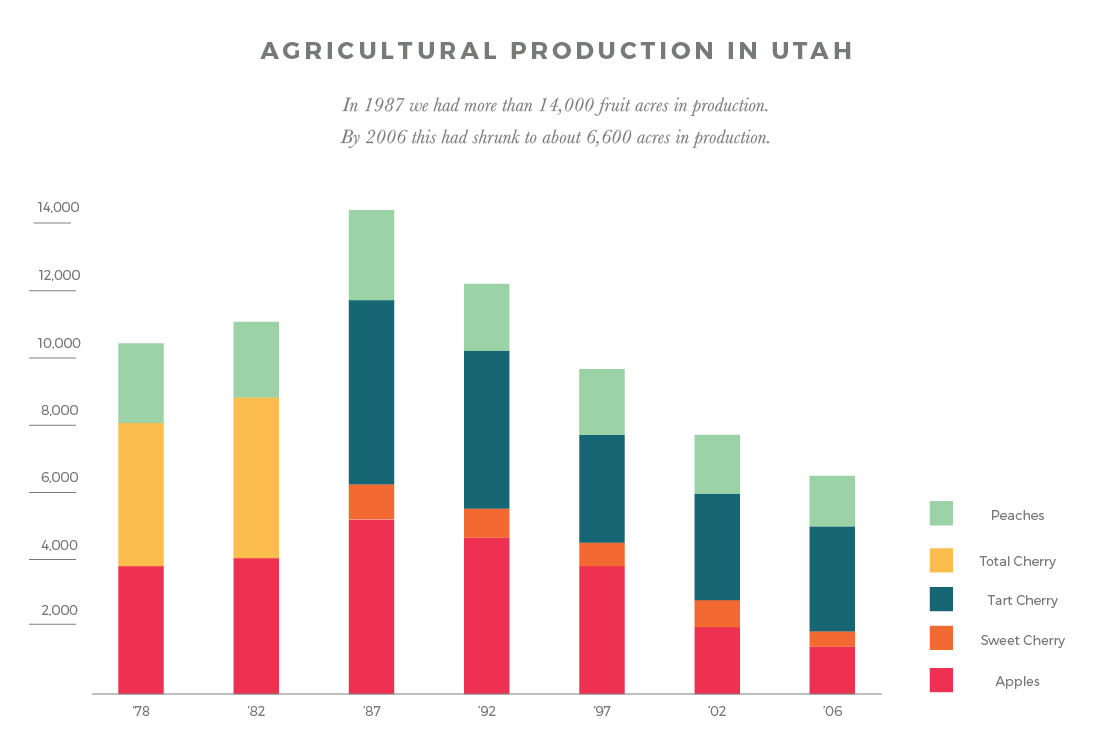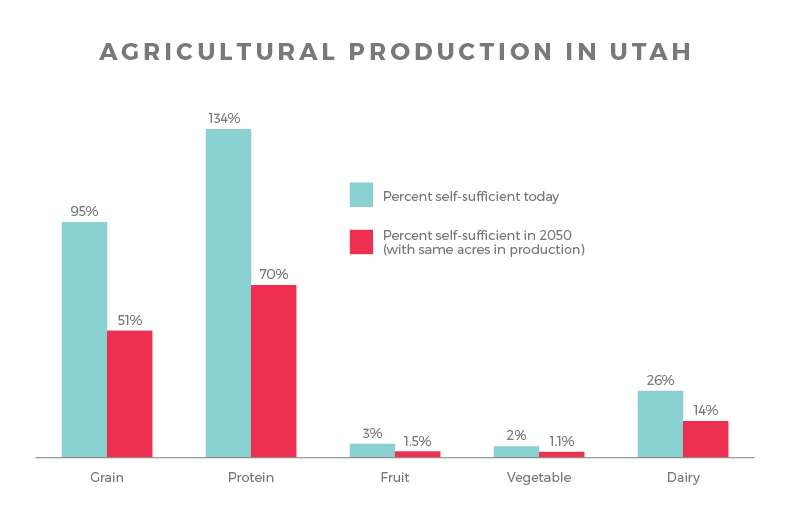Background:
Utah does not produce enough food to sustain itself. Currently, the state produces 3% of its fruit needs, 2% of its vegetable needs, and around 25% of its dairy needs. Utahns want to significantly improve their self-sufficiency and food security by growing more food locally. Utahns believe that eating more locally grown food will also be healthier for them and their families.
Loss of agricultural land around growing metropolitan areas is one of the most intractable problems nationwide. Much of Utah’s best land and climate for producing fruits and vegetables is located along the Wasatch Front, where farms are currently being replaced by homes and businesses, as they have for many decades. Stopping this trend and increasing Utahns’ ability to rely on local foods will take concerted action by many people and institutions.
For centuries, native populations farmed and raised animals along Utah’s water bodies. By the mid-1800s, Utah pioneers began raising livestock, growing crops, and diverting water to their lands. These early pioneers relied largely on locally grown food to feed themselves, and agriculture was the primary industry in the state. As Utah’s population has grown, however, the economy has diversified, more food is being imported, and much of our best agricultural land has been converted to homes, businesses, and communities.

Agriculture in Utah—particularly the production of fruits and vegetables—has been in steady decline over the last several decades.
Many of the best soils and climates for growing fruits and vegetables are located along the Wasatch Front, where urban growth is pressuring the conversion of farmlands into housing, businesses, and communities. As a result, the acreage of fruit production was cut in half between 1987 and 2006, and the trend is continuing at a rate that will eliminate almost all of Utah’s orchards by 2050.
Food crops in Utah have decreased for additional reasons. As importing produce has become more efficient, Utah increasingly relies on fruits, vegetables, and dairy from areas outside the state. Another barrier to growing local fruits and vegetables is the inability to find labor to work on farms and orchards. Many Utah farmers have also found that switching from growing fruits and vegetables to crops such as hay and alfalfa can reduce risks such as losing crops to freezing.
As a result of these changes, Utah now produces less than 3% of the state’s fruit needs and 2% of its vegetable needs. In addition, the state produces only about a quarter of the dairy that it needs. Today, Utah is more than self-sufficient when it comes to supplying protein and is also self-sufficient in grains. Given the near doubling of population, however, Utah will not be self-sufficient in protein or grains in 2050 unless production increases.

These low levels of local food production conflict with principles of self-sufficiency espoused by many Utahns and cause the state to rely on sometimes distant places (e.g., Mexico) to meet its food needs. Almost all of our fruits and vegetables are imported from areas hundreds or even thousands of miles away.
Utahns still have options to improve their agriculture. Some of the state’s prime soils are still undeveloped on private or public lands, and there are now ways to move water to many of these areas. Utah will likely not become completely self-sufficient when it comes to food, but the state could increase the amount of food it produces. Utah has a longstanding trend, however, of converting farmland and farm water into urban development to accommodate the growing population. Unless Utahns take action, this trend will continue so that by 2050 Utah will produce almost no fruits or vegetables and only a small portion of its dairy needs, and the state will no longer be self-sufficient in protein and grains.


